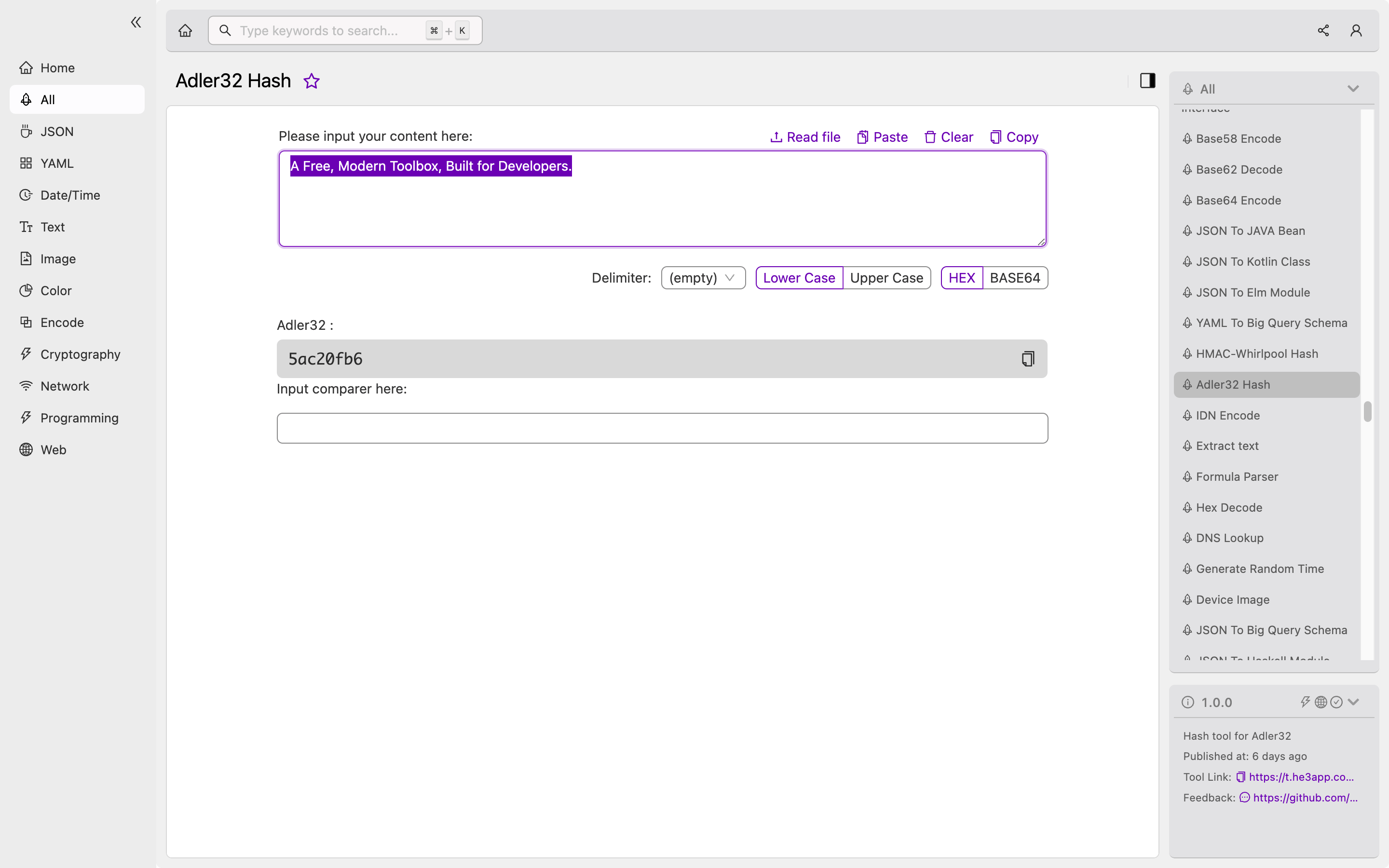Introduction
Hash functions are vital in computer science, cryptography, and data security. Adler32 Hash is a non-cryptographic hash function that is commonly used for computing checksums and detecting errors in data transmissions. This article will explore the concept of Adler32 Hash, its key features, use cases, misconceptions, and frequently asked questions.
Adler32 Hash: What is it and How Does it Work?
Adler32 Hash is a checksum algorithm that generates a 32-bit hash value by processing input data as a series of 8-bit bytes. It was developed by Mark Adler in 1995 and is widely used in data transmission protocols such as Zlib, PNG, and Gzip.
The algorithm works by initializing two variables, A and B, to some constant values. Then, for each byte of input data, the variables are updated using the following formulas:
A = (A + byte) % 65521 B = (B + A) % 65521
After processing all the input data, the final hash value is computed by shifting B 16 bits to the left and adding it to A. The resulting value is a 32-bit checksum that can be used for error detection and data integrity verification.
Sample Code and Commands
Adler32 Hash can be implemented in various programming languages, such as Python, Java, C++, and JavaScript. Here’s an example of calculating the Adler32 checksum in Python:
import zlib
data = b'This is a sample message'
checksum = zlib.adler32(data)
print(hex(checksum))This code produces the following output:
0x3e3f030aAlternatively, you can use Adler32 Hash tool in He3 Toolbox (https://t.he3app.com?9hid ) easily.

Key Features of Adler32 Hash
Adler32 Hash has several key features that make it a popular choice for error detection and checksum computation:
- Efficiency: Adler32 Hash is a fast and lightweight algorithm that can process large amounts of data quickly.
- Low Collision Rate: The hash function has a low probability of generating the same checksum for different input data, reducing the chances of false positives.
- Data Integrity: Adler32 Hash can detect changes or errors in data transmissions or storage, ensuring data integrity.
- Simple Implementation: The algorithm is straightforward to implement and can be used in various programming languages.
Scenarios for Developers
Adler32 Hash is useful in various scenarios where data integrity and error detection are critical, such as:
- Data Transmission: Adler32 Hash can be used to compute checksums for data transmitted over networks or storage devices, ensuring data integrity and detecting transmission errors.
- File Verification: Adler32 Hash can be used to verify file integrity by comparing the checksum of the original file with the computed checksum of a copy or after the file has been transferred.
- Compression: Adler32 Hash is used in compression algorithms such as Zlib and Gzip to improve compression efficiency and detect errors in compressed data.
Misconceptions and FAQs
Several misconceptions exist about Adler32 Hash. Here are the answers to some frequently asked questions:
Q: Is Adler32 Hash a cryptographic hash function? A: No, Adler32 Hash is not a cryptographic hash function. It is not designed for secure hash functions such as password hashing or digital signatures.
Q: Can Adler32 Hash detect all errors in data? A: No, Adler32 Hash can detect some but not all errors in data. For example, it cannot detect errors that result in a difference in the sum of two data sets.
Conclusion
Adler32 Hash is a popular hash function used in data integrity, error detection, and checksum computation. It is efficient, has a low collision rate, and is straightforward to implement. Developers can use Adler32 Hash in various scenarios, such as data transmission, file verification, and compression. For more information, see Wikipedia’s Adler-32 page or Mark Adler’s Adler32 Implementation Notes.
